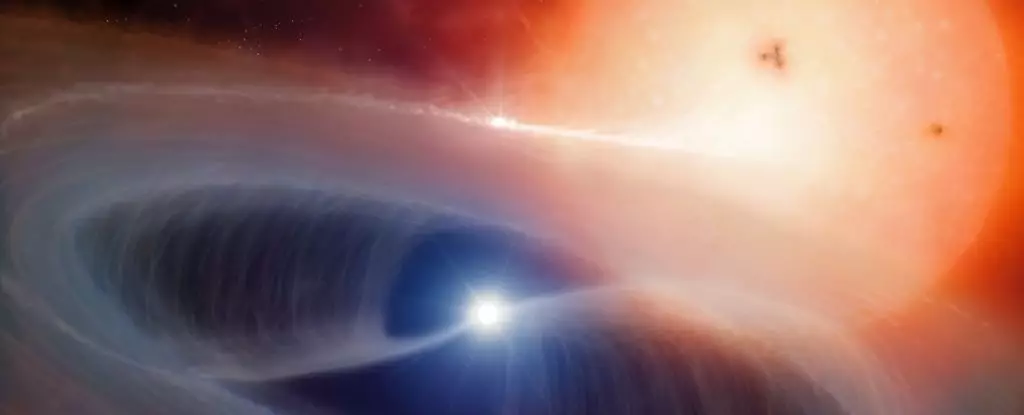The composition of the Universe’s metals remains one of its enduring enigmas. Although we understand that these elements are created in cosmic events, specifically supernovae, the details regarding their origins and the processes involved are still shrouded in mystery. Recent findings led by a collaborative international team, helmed by astronomers Martín Solar and Michał Michałowski, have significantly advanced our understanding, particularly focusing on Type Ic supernovae. These insights suggest that the progenitors of such explosive events might not be the colossal solitary stars we once imagined but rather middling stars with companion partners playing a critical role during their stellar lifecycles.
Type Ic supernovae are intriguing phenomena resulting from the catastrophic demise of massive stars that have exhausted their nuclear fuel. At this stage, all hydrogen and helium in a star’s core have been transformed into heavier elements, leading to a critical imbalance in energy production. When the core’s elements become so massive that fusion becomes energy-inefficient, the balance tips precariously. The result is a gravitational collapse of the core into either a neutron star or black hole, while the star’s outer layers erupt into space, energetically ejected and yielding an array of heavier metals.
What sets Type Ic supernovae apart from other supernova types is the absence of hydrogen and helium in their surrounding debris. This peculiarity presents a paradox that has invoked various hypotheses. One possibility suggests the progenitor star could be a stellar titan—a body 20 to 30 times the mass of the Sun—capable of pushing its lighter elements away through strong stellar winds. An alternative theory posits the influence of a stellar companion that siphons these lighter elements from the parent star prior to the explosive event.
Astronomers have long debated whether the absence of hydrogen and helium in Type Ic supernova remnants is due to a massive single star or the interaction with a binary partner. The research spearheaded by Michałowski and his collaborators reveals that many Type Ic progenitors are indeed less massive stars, supported significantly by the existence of these binary companions. The findings indicate that these companions can inherit a portion of the elements from the dying star before its spectacular termination.
Michałowski’s insights pivoted on an extensive observational project known as PHANGS (Physics at High Angular resolution in Nearby Galaxies). By retrospectively analyzing archives and observing molecular clouds where these supernovae transpired, the team was able to draw parallels between the molecular remnants of Type Ic and Type II supernovae. The results revealed that despite expectations, Type Ic progenitors did not necessitate singular massive stellar origins. Instead, the observed material pointed toward a more complex narrative involving binary interactions where lighter elements were effectively stripped away.
The implications of this research extend beyond mere classifications of supernova events. It changes the way we view the synthesis of key elements critical to life—specifically carbon that is doubly generated during explosions associated with binary systems. This finding helps to recalibrate our understanding of how elements disseminated throughout the cosmos, thereby contributing to the evolution of galaxies and, by extension, life itself.
Michałowski postulates that understanding the behavior of binary companion stars offers exciting avenues for future study. By analyzing the remnants of an expanded sample size of supernovae, researchers can gain deeper insights into stellar evolution, the elemental produce of different types of supernovae, and the delineation of their progenitors’ characteristics. This rational approach may eventually illuminate the conditions under which stars develop and explode, while also addressing how external factors, such as host galaxy characteristics and environmental influences, might shape these stellar narratives.
The study of Type Ic supernovae and their progenitors signifies a remarkable stride toward unraveling cosmic intricacies. The collaboration led by researchers like Michałowski highlights an essential paradigm shift in our understanding of stellar evolution and the vital role binary companions play in shaping the Universe’s metallic content. As further stellar forensics are conducted on an increasing number of supernovae, we move closer to solving the mysteries surrounding the origins of the Universe’s metals and by extension, the very fabric of life. Each discovery reiterates the complexity of celestial phenomena and encourages continued exploration of the cosmos.

